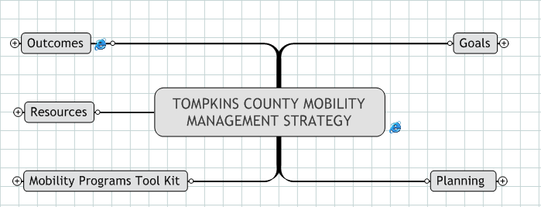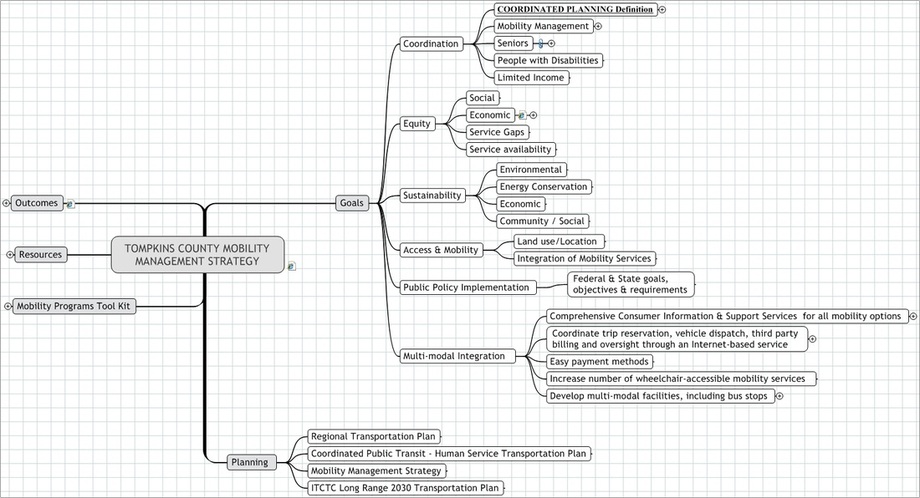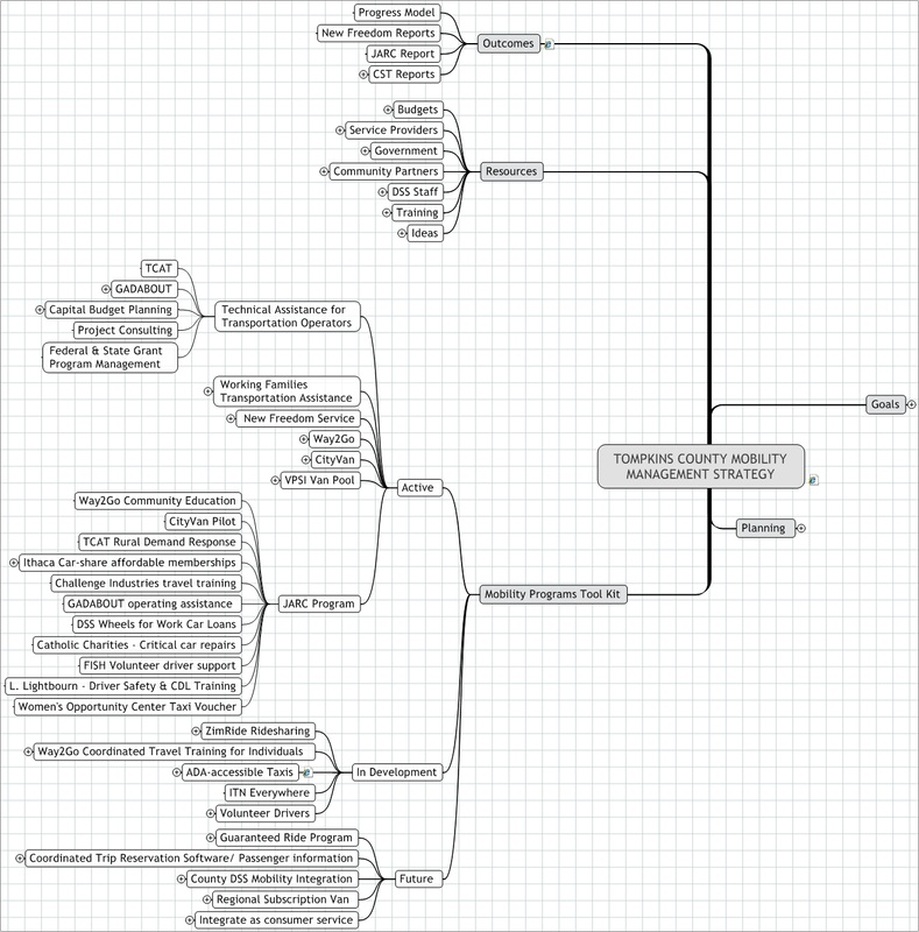"Mobility for Livable and Sustainable Communities: Tompkins Co., NY"

At the CTAA Mobility Management Conference (June 6-7, 2011), I will give a 10 minute presentation on practicing mobility management in a livable community. I collected local resources on livability and sustainability published by local governments, organizations and individuals.
The big idea of the presentation is - through collaboration among local insititutions, agencies, transportation providers, and individuals, we have created a family of mobility services and support programs which are marketed to the community. More and more we are bundling or packaging mobility services for the consumer market.
D. Mengel
The big idea of the presentation is - through collaboration among local insititutions, agencies, transportation providers, and individuals, we have created a family of mobility services and support programs which are marketed to the community. More and more we are bundling or packaging mobility services for the consumer market.
D. Mengel
| 2011_ctaa_mobility_livability_june_6_d_mengel.pptx | |
| File Size: | 4695 kb |
| File Type: | pptx |
Mobility Management Strategy Summary

The Mobility Management Strategy includes Goals, Planning, Mobility Programs Tool Kit, Resources and Outcomes.
The strategy is intended to implement goals. Goals are incorporated in planning. Plans provide the framework for program development. The mobility program tool kit includes programs that are actively operating, in development or are intended to be developed in the near future. Resources are an inventory of human, financial, mobility operators, agency network, and knowledge (ideas) needed to implement the strategy. Outcomes refer to measuring program outcomes and reconciling results with goals.
The strategy is intended to implement goals. Goals are incorporated in planning. Plans provide the framework for program development. The mobility program tool kit includes programs that are actively operating, in development or are intended to be developed in the near future. Resources are an inventory of human, financial, mobility operators, agency network, and knowledge (ideas) needed to implement the strategy. Outcomes refer to measuring program outcomes and reconciling results with goals.
Goals include: Coordination, Equity, Sustainability, Access & Mobility, Public Policy, and Multi-modal Integration.
1. The Coordination goals include the target markets of the Federal-required Coordinated Plan process.
2. Equity includes comparing the distribution of mobility service availability to distribution of target populations in order to identify service gaps. Further, equity considers the distribution of costs and benefits of the use of Federal transportation funds.
3. Sustainability includes environmental, economic, energy conservation, and community and social objectives.
4. Access and mobility relates to community development patterns, liveable communities, and the integration of transit-oriented and pedestrain-oriented design in community development.
5. Public policy implementation requires Federal and State funds be used to implement their respective requirements.
6. Multi-modal integration focuses on maximizing the customer's ease of use of all mobility services.
Planning includes planning activities conducted or managed by ITCTC, starting with the 2030 Long Range Transportation Plan. The Regional Transportation Plan is a project that is scheduled to get underway in 2011.
1. The Coordination goals include the target markets of the Federal-required Coordinated Plan process.
2. Equity includes comparing the distribution of mobility service availability to distribution of target populations in order to identify service gaps. Further, equity considers the distribution of costs and benefits of the use of Federal transportation funds.
3. Sustainability includes environmental, economic, energy conservation, and community and social objectives.
4. Access and mobility relates to community development patterns, liveable communities, and the integration of transit-oriented and pedestrain-oriented design in community development.
5. Public policy implementation requires Federal and State funds be used to implement their respective requirements.
6. Multi-modal integration focuses on maximizing the customer's ease of use of all mobility services.
Planning includes planning activities conducted or managed by ITCTC, starting with the 2030 Long Range Transportation Plan. The Regional Transportation Plan is a project that is scheduled to get underway in 2011.
The Mobility Program Tool Kit is an inventory of mobility projects that County DSS is involved with in some capacity. Active projects are currently in operating. The DSS provides technical assistance to public transportation operators and oversees the County's responsibilities as a Federal and State grant recipient with the operators. DSS manages the FTA New Freedom and Job Access/Reverse Commute grants, after grants are authorized by the County Legislature, and projects are competitively solicited by ITCTC. Of the Active projects shown, the VPSI Vanpool is a TCAT-managed project. DSS has JARC funds available to subsidize van pool fees for low income participants, when needed.
In Development includes projects DSS is currently working on with other partners. The Future section lists potential project ideas or a project, such as guraranteed ride program which is not ready to go into development. (Guaranteed ride may be implemented as part of ZimRide Rideshare.)
Resources is an inventory of all resources available to implement the mobility management strategy.
Outcomes is the newest element of the strategy. DSS reports outcomes for grant management purposes, but it needs to create a useful tool to guage progress on implementing the overall strategy.
In Development includes projects DSS is currently working on with other partners. The Future section lists potential project ideas or a project, such as guraranteed ride program which is not ready to go into development. (Guaranteed ride may be implemented as part of ZimRide Rideshare.)
Resources is an inventory of all resources available to implement the mobility management strategy.
Outcomes is the newest element of the strategy. DSS reports outcomes for grant management purposes, but it needs to create a useful tool to guage progress on implementing the overall strategy.


